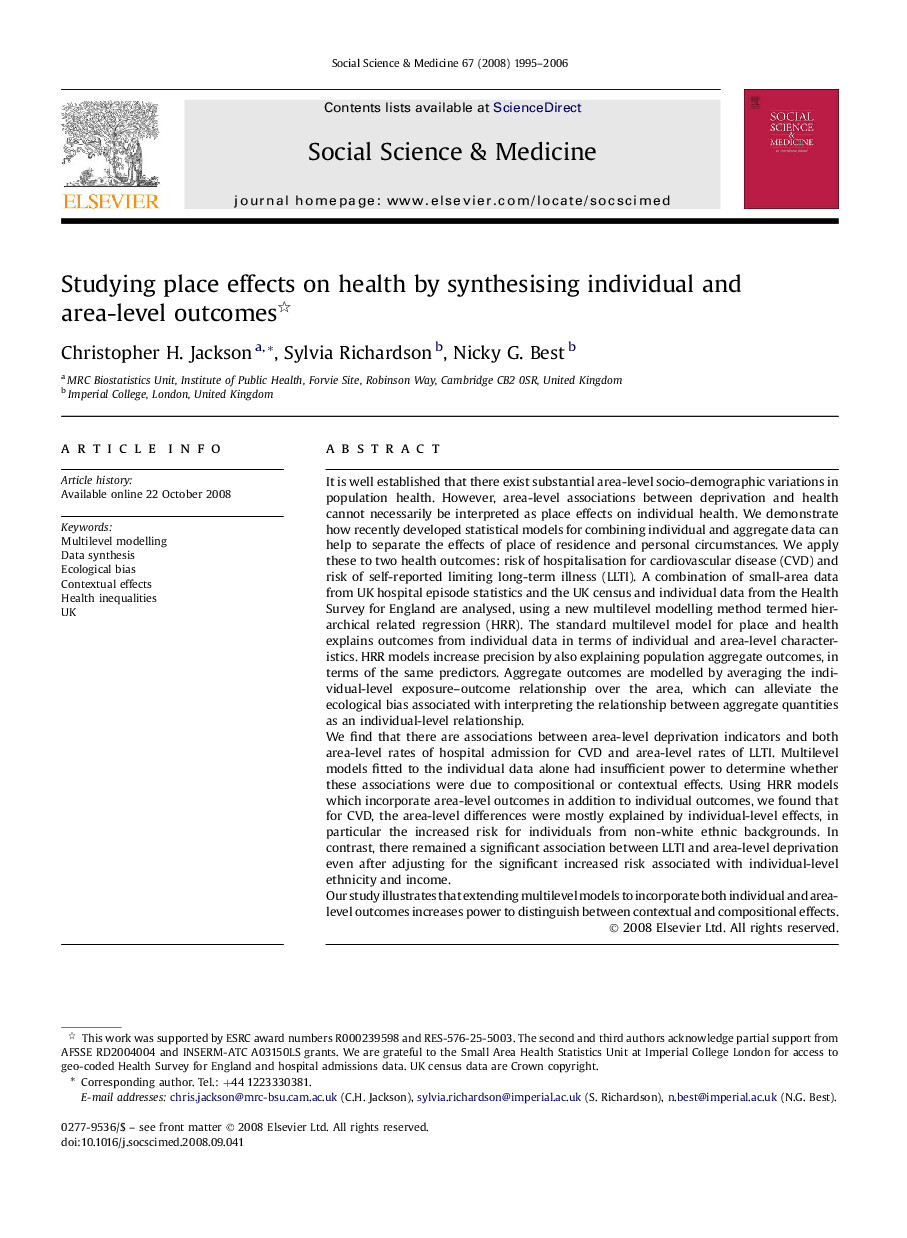| کد مقاله | کد نشریه | سال انتشار | مقاله انگلیسی | نسخه تمام متن |
|---|---|---|---|---|
| 953584 | 927592 | 2006 | 12 صفحه PDF | دانلود رایگان |

It is well established that there exist substantial area-level socio-demographic variations in population health. However, area-level associations between deprivation and health cannot necessarily be interpreted as place effects on individual health. We demonstrate how recently developed statistical models for combining individual and aggregate data can help to separate the effects of place of residence and personal circumstances. We apply these to two health outcomes: risk of hospitalisation for cardiovascular disease (CVD) and risk of self-reported limiting long-term illness (LLTI). A combination of small-area data from UK hospital episode statistics and the UK census and individual data from the Health Survey for England are analysed, using a new multilevel modelling method termed hierarchical related regression (HRR). The standard multilevel model for place and health explains outcomes from individual data in terms of individual and area-level characteristics. HRR models increase precision by also explaining population aggregate outcomes, in terms of the same predictors. Aggregate outcomes are modelled by averaging the individual-level exposure–outcome relationship over the area, which can alleviate the ecological bias associated with interpreting the relationship between aggregate quantities as an individual-level relationship.We find that there are associations between area-level deprivation indicators and both area-level rates of hospital admission for CVD and area-level rates of LLTI. Multilevel models fitted to the individual data alone had insufficient power to determine whether these associations were due to compositional or contextual effects. Using HRR models which incorporate area-level outcomes in addition to individual outcomes, we found that for CVD, the area-level differences were mostly explained by individual-level effects, in particular the increased risk for individuals from non-white ethnic backgrounds. In contrast, there remained a significant association between LLTI and area-level deprivation even after adjusting for the significant increased risk associated with individual-level ethnicity and income.Our study illustrates that extending multilevel models to incorporate both individual and area-level outcomes increases power to distinguish between contextual and compositional effects.
Journal: Social Science & Medicine - Volume 67, Issue 12, December 2008, Pages 1995–2006